Water Cycle
The water cycle, also known as the hydrologic cycle, describes the continuous movement of water on, above, and below the surface of the Earth. This process is crucial for the existence of life on our planet.
Key Processes in the Water Cycle
There are several key processes involved in the water cycle:
- Evaporation: The process by which water changes from a liquid to a gas (water vapor) due to heat energy from the sun.
- Condensation: The process by which water vapor in the air cools and changes back into liquid water, forming clouds.
- Precipitation: When the accumulated water droplets in clouds become too heavy, they fall to the Earth's surface as rain, snow, sleet, or hail.
- Runoff: When precipitation hits the Earth's surface, it may flow over the ground and collect in rivers, lakes, and oceans, or it may seep into the soil, becoming groundwater.
- Transpiration: The process by which water is absorbed by plant roots and released into the atmosphere as water vapor through the plant's leaves.
Importance of the Water Cycle
The water cycle is vital for sustaining life on Earth. It helps maintain the balance of water on the planet, provides freshwater for plants, animals, and human consumption, and influences weather patterns and climate.
Study Tips
To better understand the water cycle, consider the following study tips:
- Review each key process in the water cycle and understand how they are interconnected.
- Use diagrams and visual aids to illustrate the different stages of the water cycle.
- Learn about the impact of human activities on the water cycle, such as deforestation and pollution.
- Explore real-life examples of the water cycle in action, such as the formation of clouds and the occurrence of rainfall.
By understanding the water cycle, you can gain a greater appreciation for the interconnectedness of Earth's systems and the importance of preserving our planet's water resources.
[Water Cycle] Related Worksheets and Study Guides:
.◂Math Worksheets and Study Guides Seventh Grade. The Pythagorean Theorem
Study Guide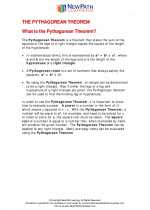 The Pythagorean Theorem
The Pythagorean Theorem  Study Guide
Study Guide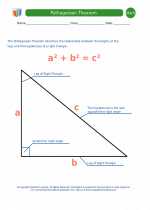 Pythagorean Theorem Definitions
Pythagorean Theorem Definitions  Worksheet/Answer key
Worksheet/Answer key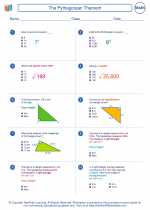 The Pythagorean Theorem
The Pythagorean Theorem  Worksheet/Answer key
Worksheet/Answer key The Pythagorean Theorem
The Pythagorean Theorem  Worksheet/Answer key
Worksheet/Answer key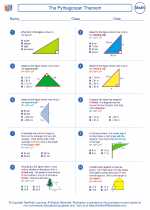 The Pythagorean Theorem
The Pythagorean Theorem  Worksheet/Answer key
Worksheet/Answer key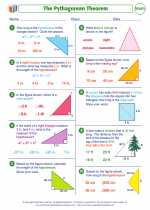 The Pythagorean Theorem
The Pythagorean Theorem  Worksheet/Answer key
Worksheet/Answer key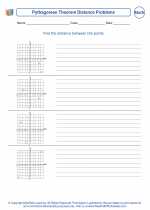 Pythagorean Theorem Distance Problems
Pythagorean Theorem Distance Problems  Worksheet/Answer key
Worksheet/Answer key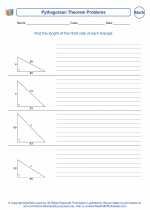 Pythagorean Theorem Problems
Pythagorean Theorem Problems  Worksheet/Answer key
Worksheet/Answer key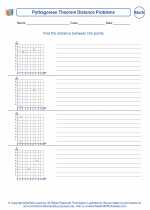 Pythagorean Theorem Distance Problems
Pythagorean Theorem Distance Problems  Worksheet/Answer key
Worksheet/Answer key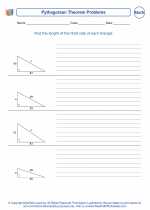 Pythagorean Theorem Problems
Pythagorean Theorem Problems  Worksheet/Answer key
Worksheet/Answer key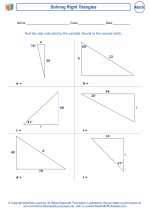 Solving Right Triangles
Solving Right Triangles  Worksheet/Answer key
Worksheet/Answer key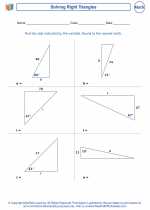 Solving Right Triangles
Solving Right Triangles 

 Study Guide
Study Guide
 Worksheet/Answer key
Worksheet/Answer key
 Worksheet/Answer key
Worksheet/Answer key
 Worksheet/Answer key
Worksheet/Answer key
 Worksheet/Answer key
Worksheet/Answer key
 Worksheet/Answer key
Worksheet/Answer key
 Worksheet/Answer key
Worksheet/Answer key
 Worksheet/Answer key
Worksheet/Answer key
 Worksheet/Answer key
Worksheet/Answer key
 Worksheet/Answer key
Worksheet/Answer key
 Worksheet/Answer key
Worksheet/Answer key

The resources above cover the following skills:
Geometry (NCTM)
Analyze characteristics and properties of two- and three-dimensional geometric shapes and develop mathematical arguments about geometric relationships.
Create and critique inductive and deductive arguments concerning geometric ideas and relationships, such as congruence, similarity, and the Pythagorean relationship.